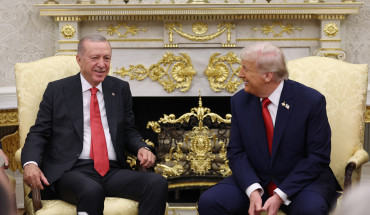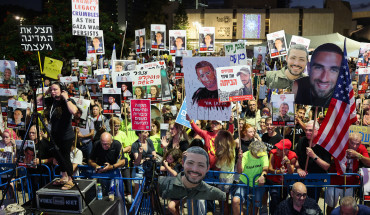A senior Iranian naval officer said on Monday that the country’s warplanes warned off two US-led coalition vessels during a military drill in the Persian Gulf, the Iranian media reported. "This morning and in the first hours of the drills, two warships of the coalition which had approached the drills zone to monitor the Iranian Navy units were identified by the Navy drones," Spokesman of the drills Rear Admiral Seyed Mahmoud Moussavi was quoted as saying by Fars News Agency. "After declaring the issue to the drills' tactical base, the patrolling and reconnaissance planes flew over the coalition warships and warned them (to leave the region) and the warships left the drills zone," he added. The Iranian naval exercises codenamed Mohammad Rasoulollah began in the country’s southern and southeastern waters, South Makran region and the northern coastline of the Sea of Oman today. The Iranian Army's Ground, Air, Navy and Air Defense Forces are participating in the two-day drills, and different vessels, including light and heavy submarines and helicopters and reconnaissance planes were used.
Comment: Today's incident is the latest in a series of dangerous encounters by the naval forces of Iran and US and its allies in the region. Last year, Centcom commander Gen. Joseph Votel told US Congress that the IRGC naval forces had increased their “unprofessional, unsafe and abnormal” maritime activities and regularly harassed US ships in the Gulf region. "We have to hold Iran accountable,” he stressed. His comment came just days after the IRGC had sent fast-attack boats close to the USNS Invincible in the Strait of Hormuz, forcing the U.S. ship to change course.
In reaction to Votel’s remarks, Iran's Defense Minister Hossein Dehghan called on Washington to leave the region. “What are the Americans doing in the Persian Gulf? It is better they leave this region and do not create trouble for the regional countries,” he said. “Is it acceptable that an armed, insane thief breaks into someone’s house and expects the red carpet to be rolled out for him?”
And on March 21, the George H.W. Bush – a U.S. aircraft carrier – confronted a number of Iranian Navy fast-attack boats approaching a US-led, five-vessel flotilla as it entered the Strait of Hormuz. The incident reportedly prompted the U.S. warship to send helicopter gunships to deter Iranians speedboats, some of which had reached as close as half a mile away from the aircraft carrier. U.S. Navy commanders have warned that such Iranian provocations could result in miscalculation and trigger an armed confrontation in the Persian Gulf.
In April, American officials said that a US Navy guided-missile destroyer fired a warning flare to deter an IRGC vessel approaching it in the Persian Gulf. According to Lt. Ian McConnaughey, a spokesman for the Bahrain-based 5th Fleet, the Iranian vessel attempted to keep coming closer to the USS Mahan although the destroyer had changed course to avoid the escalation. The vessel, which had come within a kilometer of the Mahan, sailed away after the warning.
On May 10, the top Iranian military official hinted that the country’s naval forces would use speedboats manned by “martyrdom-seeking combatants” against the US Navy in case of a naval warfare in the Persian Gulf. “These boats are not just a piece of equipment; they are a culture,” Major General Mohammad Hossein Bagheri, the chief of staff of the Iranian Armed Forces, said at a conference on speedboats in Tehran. “The combatant that mans it is inspired by faith and trust in God and the martyrdom-seeking spirit of Ashoura [a major religious commemoration of the martyrdom of Prophet Muhammad’s grandson at Karbala]. He shuts his eyes to worldly attractions and steps into jihad [holy war] against the infidel front. He is ready to sacrifice his life,” Bagheri added.
The Middle East Institute (MEI) is an independent, non-partisan, non-for-profit, educational organization. It does not engage in advocacy and its scholars’ opinions are their own. MEI welcomes financial donations, but retains sole editorial control over its work and its publications reflect only the authors’ views. For a listing of MEI donors, please click here.













